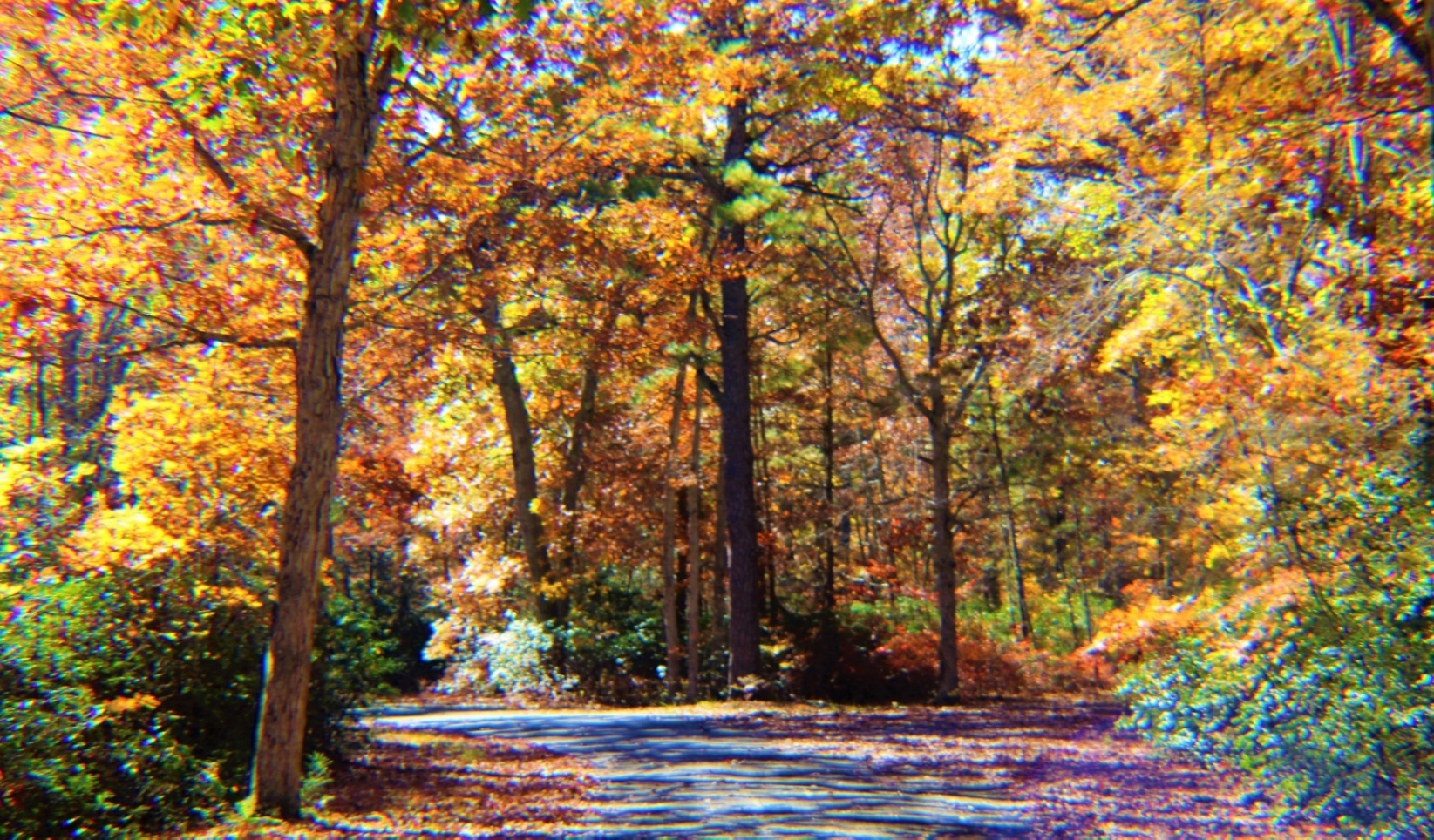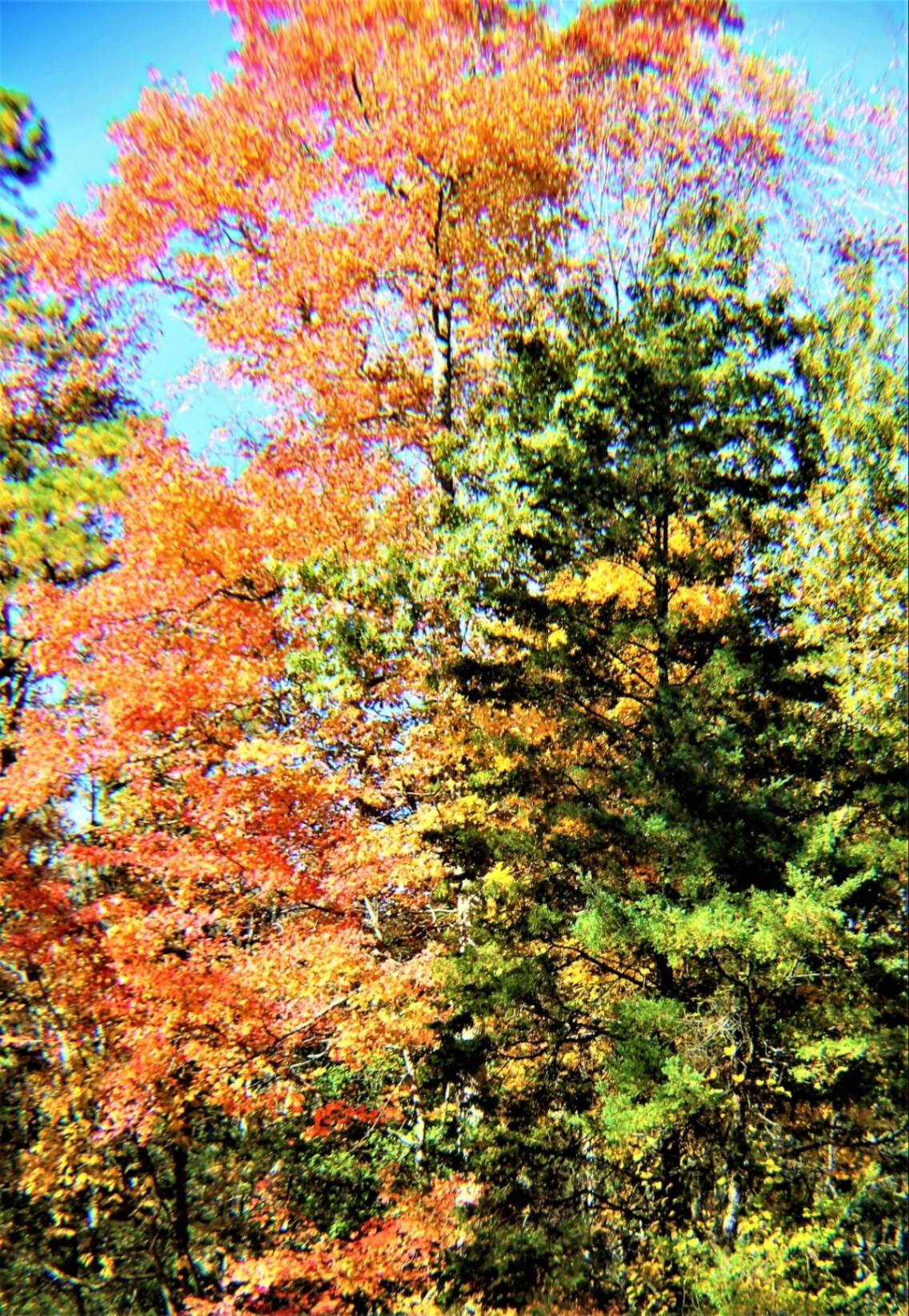 IMAGINE
IMAGINE
you are walking a path through the woods, on a sunlit fall day, in woods like the ones in the photographs.
Breathe in deeply through your nose and then breathe out.
As you breathe, imagine the pungent leafy smell of the season.
Now, let your eyes roam over the scene in front of you in your mind (or in the images), from your right to left field of vision. Stop walking or just move slowly enough that you can fully and safely take in your surroundings.
 You might combine your visual exploration with deep breathing, in and out as you scan the forest.
You might combine your visual exploration with deep breathing, in and out as you scan the forest.
As you move your eyes very slowly from the right, start by looking low at the dirt, grass, rocks, bushes and tree roots, and then up at the tree trunks and branches, the leaves and the sky. Notice the variety of colors and the range of hues within each color grouping. Tune into how the light and shadows create even more diversity of color.
Using this pattern, continue breathing and scanning from right to the left till you get to the end of your field of vision.
As you move along in the woods, keep scanning for full effect.
What you are doing is “full-color” seeing.
This practice invites you to view the visual cornucopia that is much of nature, which we tend not to take the time to notice. Your senses thank you!
 Images and contemplations by Kristin Littel.
Images and contemplations by Kristin Littel.
 BREATHE
BREATHE IMAGINE
IMAGINE
 TURN YOUR GAZE
TURN YOUR GAZE WONDER
WONDER